Spending money on a good mattress is a big deal, but it's worth it for the comfort and sleep quality you get. Whether you're decluttering, moving, redesigning a room, or investing in space-saving furniture like a Murphy bed, proper mattress care becomes essential. But these beds raise practical questions: Can they remain comfortable? Will the mattress maintain its shape over time?
The answer lies in choosing the right mattress and knowing how to store it properly, especially when it's not in use. When done correctly, storing a mattress against a wall can preserve its lifespan and performance for years to come, saving you money and ensuring comfort when it's needed again.
In this guide, you’ll learn everything from selecting the right Murphy bed mattress to expert tips on proper storage.
Key Takeaways:
-
Proper mattress storage and cleaning are essential to prevent odors, damage, and deformation.
-
Murphy beds won’t ruin a mattress—quality options like The Lori Mattress are designed to last.
-
For Murphy beds, choose a durable, yet lightweight mattress with 7–10 inches of thickness for comfort and easy lifting.
Maximize your space and comfort. Upgrade to a stylish Murphy bed today!
LIMITED TIME SALE ON MURPHY BED
Table of Contents
Can a Murphy Bed Damage Your Mattress?
Why Proper Mattress Storage Matters
Tips to Store a Mattress Against a Wall
How to Pick the Perfect Mattress for Murphy Beds
Murphy Beds & Mattress Maintenance Tips
What to Avoid When Storing a Mattress
Final Thoughts
Can a Murphy Bed Damage Your Mattress?
A prevalent concern for homeowners and apartment dwellers alike is whether Murphy beds compromise mattress quality. The consensus is reassuring: when used correctly, Murphy beds do not ruin mattresses.
Proper maintenance and choosing the mattress type are crucial. High-quality mattresses, like The Lori Mattress, retain their structural integrity over years of Murphy bed use.
The mechanics of Murphy beds involve storing the mattress vertically, which can lead to questions about how gravity might affect the mattress over time. However, the Lori Bed is designed to support weight from multiple directions.
As long as the mattress is adequately supported when the bed is closed and stored upright, the internal materials—including memory foam, springs, or latex—will not degrade faster than usual.
(Have you ever wondered how the Murphy bed got its name? Find out in the post.
Why Proper Mattress Storage Matters
A mattress isn’t just another household item—it’s a significant purchase meant to last 8–10 years with proper care. But if you toss it in a garage or stack mattresses in a damp corner of your basement, you risk damaging its internal structure and hygiene.
Improper storage can:
-
Deform the foam layers and coils
-
Trap moisture, leading to mildew growth
-
Attract dust mites
-
Causes permanent odor retention
-
Break down the mattress materials due to compression or poor airflow
Taking the right steps to store a mattress properly can save you hundreds of dollars and hours of cleaning or regret.
Tips to Store a Mattress Against a Wall

Storing a mattress against the wall is a space-saving solution, especially in small spaces. Whether it’s memory foam, spring, or hybrid, proper preparation is essential to keep it in good condition long-term.
Here’s how to store your mattress properly:
1. Clean Your Mattress Thoroughly
Before you store any mattress, it must be clean and dry. Start with these steps:
-
Vacuum all surfaces of the mattress, including sides.
-
To eliminate remaining smells and dampness, evenly distribute baking soda over the affected area. Let it rest for 30 minutes.
-
Spot clean any stains using a detergent and water—avoid soaking the fabric.
-
To eliminate bacteria and dust mites, it is recommended to air the item thoroughly, ideally by placing it in direct sunlight for several hours.
-
Before storing or wrapping, allow the mattress to air out for a day.
This cleaning process is essential for preventing mildew growth and bacteria buildup during long-term storage.
2. Use the Right Mattress Cover
A mattress bag is a non-negotiable part of storage. Consider these choices, which vary based on your financial resources and how you plan to store them.
-
Plastic mattress bag: Affordable and widely available, but must be sealed with caution to allow airflow.
-
Breathable plastic cover: More expensive, but allows moisture to escape, reducing mildew risk.
-
Plastic wrapping with small holes can also be used, provided you store the mattress in a dry location.
Avoid wrapping your mattress in a plastic sheet completely sealed with tape unless you know it will be in a climate-controlled unit, as this could trap moisture.
3. Optimize Positioning and Support
A common question about mattress storage is whether to keep it flat or upright, and the answer often depends on your space and setup.
Storing a Mattress Flat
-
Ideal for maintaining the mattress's internal structure
-
Great for long-term storage
-
Recommended for memory foam, latex, and hybrid mattresses
If you have the room, storing a mattress flat—such as on a platform or wooden pallets—can help preserve its shape and comfort. Avoid placing heavy objects on top to prevent compression.
A smart solution for flat storage that also saves space is a Murphy bed. Options like those from Lori Beds allow you to store your mattress flat when in use, then fold it vertically into the wall, keeping it off the floor and out of the way without compromising support.
4. Choose the Right Storage Location
Where you store your mattress will determine how long it lasts. For optimal protection against pests and humidity, storing your mattress in a climate-controlled unit is recommended.
Ideal storage spaces:
-
Spare bedroom
-
Sofa bed frame (for thin or foldable mattresses)
-
Climate-controlled self-storage units
-
Finished basement with a dehumidifier
-
Clean the attic with a stable temperature
Some ideas to avoid:
-
Garages
-
Outdoor sheds
-
Damp basements
-
Non-insulated spaces
If your only option is a storage unit without climate control, double your protection with plastic and desiccant packs to absorb moisture.
5. Secure the Mattress to Prevent Shifting
To ensure your mattress stays in place and doesn’t tip over or shift, follow these steps:
-
Use Bungee Cords or Furniture Straps: Anchor the mattress to a sturdy structure like shelving brackets or hooks on the wall. Secure it with bungee cords or adjustable straps, but don’t tighten them too much to avoid damaging the mattress.
-
Add Non-Slip Pads: If needed, place rubber wedges or non-slip mats under the mattress to prevent it from sliding or shifting.
-
Place Heavy Furniture in Front: If you don’t have brackets, place stable furniture (like a dresser) in front of the mattress to keep it from tipping over.
If stacking is unavoidable, rotate and flip them every few months and place a breathable material like fabric or cardboard in between.
6. Control the Climate of Your Storage Space
Environmental conditions are critical when storing mattresses:
-
Maintain a consistent temperature: Aim for 60–75°F (15–24°C). Keep away from areas exposed to very hot or cold temperatures.
-
Keep humidity below 50%: High moisture promotes mold and foam deterioration. Use a dehumidifier if needed.
-
Ventilate the area: Air movement reduces moisture buildup and keeps the materials fresh.
-
Avoid basements or attics: These areas often fluctuate in temperature and humidity, increasing the risk of damage.
If you're considering long-term storage, a climate-controlled unit may be worth the investment.
Need to make space? Investing in a Murphy bed or an upgraded storage space is a smart long-term solution.
How to Pick the Perfect Mattress for Murphy Beds

Almost any mattress can work if it meets the following:
Mattress Weight
According to Slumber Search, slumping is caused by gravity pulling the upper portion of the mattress forward when upright. Prevent it by:
-
Using lightweight mattresses.
-
Keeping mattress straps tight.
-
Rotating the mattress every 3–6 months.
-
Avoiding overstuffed or ultra-soft pillow tops.
At Lori Beds, our mattresses are designed to work seamlessly with both the mechanism-free YouLift Bed and the mechanized Lori Bed. For more tips on choosing the best mattress, check out our Comprehensive Murphy Bed Mattress Guide.
Mattress Thickness
-
Most Murphy beds accommodate 7–12 inches.
-
Lori Beds support up to 10 inches; YouLift models support up to 12.
-
Thicker is less bending, but check your frame's specs.
Murphy-Specific Mattresses
|
Mattress Type |
Storing Tips |
|
Memory Foam Mattress |
|
|
Latex Mattresses |
|
|
Hybrid Mattress |
|
|
Spring Mattress |
|
Murphy Beds & Mattress Maintenance Tips
Bed frames and mattresses are among the most significant investments in long-term health. According to the National Heart, Lung, and Blood Institute, ongoing sleep deficiency is linked to an increased risk of heart disease, kidney disease, high blood pressure, diabetes, and stroke. Maintaining your health is tied to getting proper rest. For most, that means a comfortable place to lay their head each night.
In addition to the right bed being a sound investment in your well-being, it's also a financial investment. Mattresses alone can be expensive. They're considered a large purchase because they have staying power. The average lifespan of a mattress is between 7 and 10 years. So, understandably, buyers are curious if a Murphy bed will wear them out before its expiration date.
But that is not exactly the case!
A Murphy bed or wall bed won't ruin a well-made mattress even after several years of use. But, of course, depending on the type of bed frame you choose, certain considerations must be made to maintain a mattress's integrity. For example, you should rotate a mattress on a traditional box spring every three to six months to prevent permanent body indentations.
Upgrade your home with a Murphy bed—shop now!
What to Avoid When Storing a Mattress
Even with good intentions, improper storage or misuse can shorten the life of a mattress dramatically. Here are mistakes and how to avoid them:
-
Storing without cleaning: Trapped dirt or moisture can degrade internal materials over time.
-
Using non-breathable plastic wrap: This can cause sweating and foam breakdown.
-
Placing heavy weights on a stored mattress: Compresses and deforms the internal structure.
-
Ignoring environmental factors: Temperature fluctuations and humidity are killers for mattress integrity.
By avoiding these missteps, you increase the lifespan and usability of your mattress, whether it’s stored or in daily use.
Final Thoughts
Whether you’re stashing away an extra mattress, a memory foam mattress, or a luxurious latex model, taking the time to store it properly ensures it remains clean, supportive, and ready to use again. Always choose a climate controlled storage unit when possible, clean the mattress thoroughly, and be strategic about how you store a mattress — whether flat or upright.
Remember, learning to store a mattress doesn’t just save space—it saves your mattress. Avoid shortcuts like wrapping in plain plastic sheets or leaving it in a garage for months. Follow these guidelines for proper mattress storage, and your bed will thank you with years of restful sleep.
Ready to upgrade your space? Shop Lori Beds today for stylish, storage-friendly solutions that don’t compromise on sleep quality.

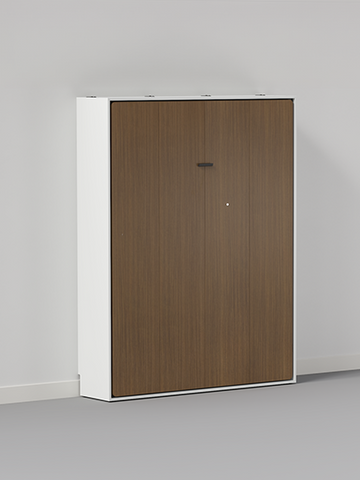
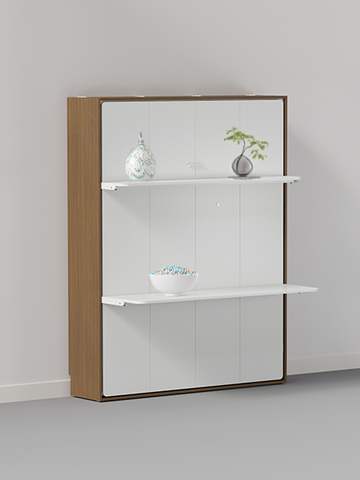

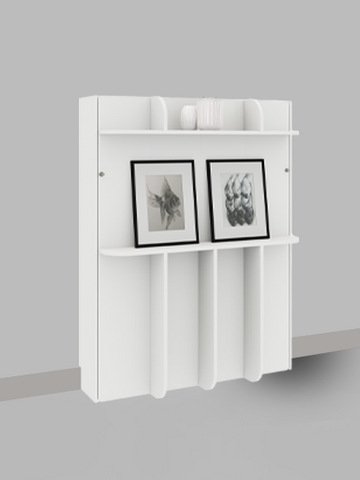
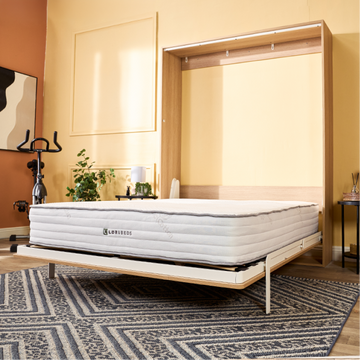


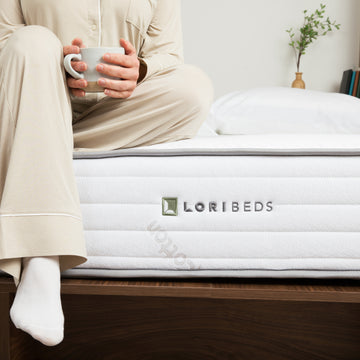



1 comment
Linda
Do you ever have a time of year when a Lori wall bed is on sale?
Do you ever have a time of year when a Lori wall bed is on sale?